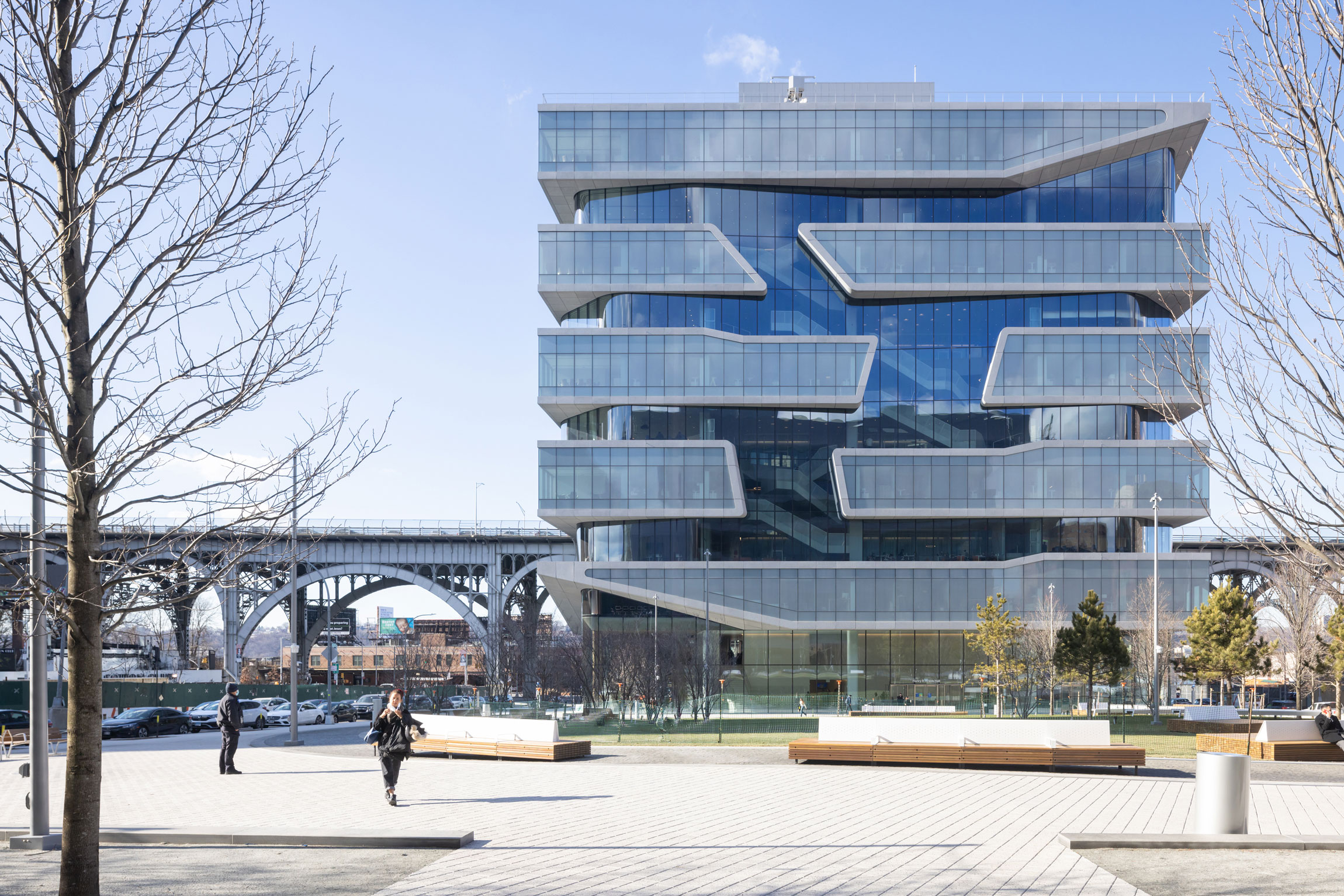
Jektvik Ferry Quay Area
Architect: Carl-Viggo Hølmebakk
Location: Rødøy, Norway
Type: Waiting Room, Restroom
Year: 2010
Photographs: Carl-Viggo Hølmebakk
The following description is courtesy of the architects. Despite the informal program, the small service building on Jektvik ferry terminal gave rise to a number of constructional and architectural experiments. Besides meeting some pragmatic functions – a waiting room and two rest rooms – the project developed to become a study on transparency and translucency, being in the northern part of Norway which is characterized by dark winters and light summers. (Jektvik is just a few kilometres from the Arctic circle.)
The vehicle for this study is built up as follows: A load-bearing, prefabricated, modular aluminium structure with a reversed facade glazing. I.e. a SG-facade system (“Structural Glazing”) is assembled with the outside facing inwards. Both walls and ceiling have this structure and the rooms appear inside with plane, hygienic glass surfaces. The glass units, which are composed of various combinations of frosted and coloured glass, give varying transparency and translucency to the side rooms and the surroundings.



On the outside of the supporting aluminium structure a lath work of 48×48 pine-wood, c/c approx. 250mm is mounted. The lath work makes the underlying structure for a seamless outer skin of reinforced UV-resistant polyester. The fibre glass skin is not cast against a smooth shape (e.g. as in the hull of a boat), but hung up on the timberwork as a wet cloth before hardening, making a slightly uneven, weatherproof surface. The fibreglass work was made – like the aluminium structure – inside a closed production hall before it was taken in six parts by truck to the site.
The main subcontractors for the house have been a glass contractor and a boat building company. All technical installations and lighting are positioned, half visible, in the zone between the glass and fibre glass. Over the flat glass ceiling this zone functions as a cold attic, which contains a ventilation aggregate, technical ducts and lighting. The working title for the project was “the shrimp” because the structure and internal organs of the house would be partially visible through the transparent layers of glass and fibre glass – as the visible organs of a live shrimp.




Except for the weather shielding property, another quality of the skin is the maintenance benefits. The fibreglass technique is well known by inhabitants in the area, which is used for repairing their fishing boats. Cracks and dents from heavy use or vandalism can easily be fixed with local knowledge and “in stock” materials.
It would not be correct to say that the harsh coastal climate and maintenance considerations are the only reason for the skin construction. There are other buildings nearby, built in a more conventional way, that quite well serve their purpose. The motivation for the transparent structure was also the intriguing architectural potential or possible effects of this building principle: That the house itself would serve as a light fixture in the long, dark Nordic winter – like a big Chinese lamp. Also fascinating was the possible “psychosocial” play that might unfold when the users notice movements and shadows of people inside the building or in the neighbouring rooms.

Carl-Viggo Hølmebakk 
Carl-Viggo Hølmebakk


The special construction method has provided a house with many demanding details. The building is universally accessible with wheelchair entrances at the same level as the outdoor area. A steel grid floor surrounds the entire building, so that the transparent walls can be traced all the way down to the ground. The space beneath the grid is also the inlet chamber for ventilation of both the rooms themselves and the double wall structure. The general lighting consists of linear LED lighting fixtures that are mounted on the ceiling trusses. There are also mounted down lights that provide concentrated light to the sanitary equipment in the rooms below. Colours and visual contrasts are adapted to the visually impaired.
About the three dimensional form of the building one could say that it is the result of a sequence of geometrical considerations and decisions:
- The parallelogram shaped floor plan, parallel to the road, and angled towards the next house to make a secluded outdoor passage to the southern quay area.
- The economically and technically motivated vertical walls of rectangular SG- façade units.
- The cantilevered roof overhang, covering the entrances and lining up with the next building to make the sheltered entrance area.
- The tilted roof, as a geometrical result of the underlying geometry (a straight planar saddle roof on top of the rooms and overhang) gives a well-adapted room for ventilation unit, ducts etc.
The result is a sculptural form with many internal dependencies – quite intricate, although it looks somewhat relaxed or random with its “wind queer” geometry. The geometrical considerations are of course not only logical or mathematical (as explained in the four points above), but also a sculptural conduct of a more intuitive interpretation of the site.
As shown in the overall site plan, the project includes several new structures along the quay area – a storage building, an information pavilion, rest areas and six small dwellings for tourists and truck drivers. At this point the implemented parts are the service house and the renovated kiosk with outdoor area.
CVH

Project Details
- Project Name: Jektvik Ferry Quay Area
- Architect:
- Carl-Viggo Hølmebakk
- architect Manthey Kula (co-workers in preliminary phase)
- Team:
- Carl-Viggo Hølmebakk (PL)
- Rickard Riesenfeld
- Beate Hølmebakk
- Per Tamsen
- Location: Rødøy, Norway
- Client: Statens vegvesen, National Tourist Routes v/ Steinar Skaar
- Year of completion: 2010
- Consultants:
- Siv. ing. Finn-Erik Nilsen (structural calculations)
- K. Apeland AS (structural description)
- Aalerud Hamar (HVAC)
- IBR elprosjekt (electro)
- Construction manager: Bygg Team Bodø v/ Rune A. Larsen
- Performing contractor: Midt-Nord Prosjekt AS
- Major subcontractors:
- Profilteam Hamar AS (glasing/ aluminum.)
- Hansvik Boat AS (GRP)
- YIC (ventilation, sanitary, electrical)






